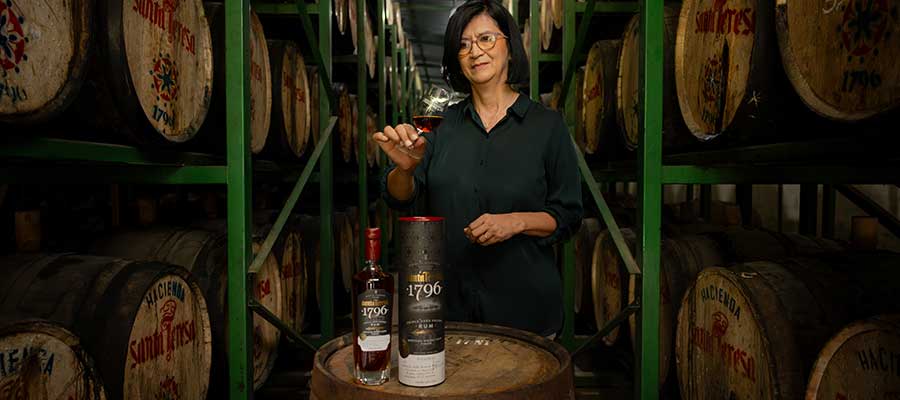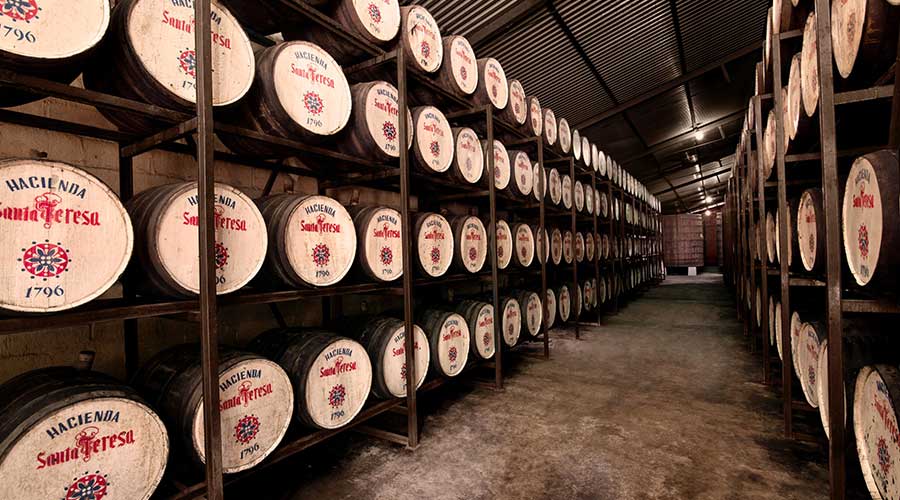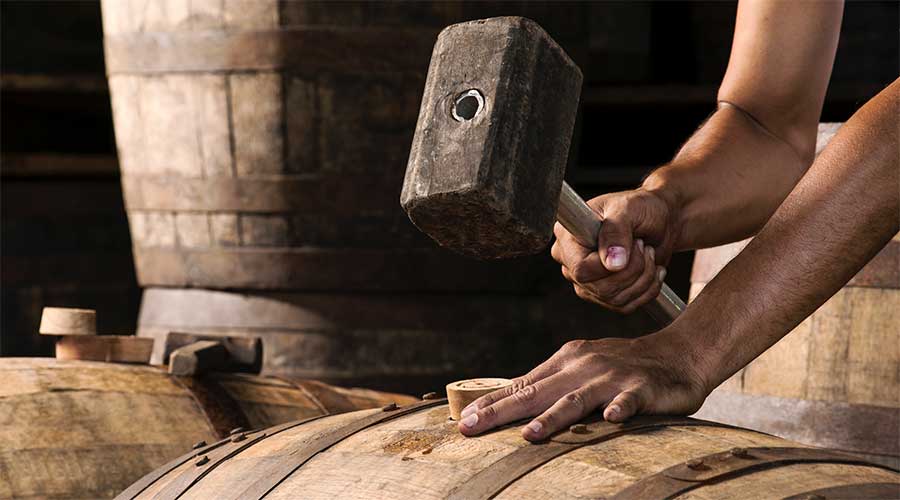The aging process for rums is often a well-kept secret at distilleries. It’s also often the subject of controversy, with the question of the age of the rum (solera, youngest drop, oldest drop), the addition of sugar and/or caramel.
Fortunately, more and more of them are making a salutary effort to better explain their processes to rum lovers. This is particularly true of Venezuelan distillery Santa Teresa. The brand owned by the Vollmer family, whose entire raw material (molasses) comes from the Aragua Valley, has developed a complex ageing method over the centuries, which needs to be explained in detail. The floor is given to Nancy Duarte, Santa Teresa’s cellar master.
 Interview : “The sweetness of our Santa Teresa 1796 Solera rum is a consequence of its triple aging and not of added sugar.”
Interview : “The sweetness of our Santa Teresa 1796 Solera rum is a consequence of its triple aging and not of added sugar.”
What types of casks are used to age Santa Teresa rums?
During the first aging phase, we mainly use American white oak (ex-bourbon) casks. During the second aging phase, American white oak (hogshead) barrels are used (ex-scotch whisky). Finally, for the third phase of aging, the rums wait in large French vats (foudres) made of Limousin oak.
How does the Solera process work?
The triple aging of our world’s most awarded Super Premium rum, Santa Teresa 1796, begins with traditional aging in American white oak casks, where three types of spirit are aged separately. Light, heavy and pot still for a period of 4 to 35 years. After this period, these rums are carefully blended before being sent to the second stage of aging.
The second stage in the ageing process is the Solera method. Four rows of barrels are used, with only 50% of the bottom row extracted and replaced by 50% of the top row. The liquid thus cascades from top to bottom, from barrel to barrel.
Always in contact with the mother rum, which has been there since 1992 (the first time a Solera was filled). The liquid extracted from the fourth row is sent to the third aging stage, which is made up of French oak vats (foudres) that haven’t been emptied since 1992, since only 50% of them can be extracted with each production run.

At the end of the process, how is the age of the rum determined (for the European market)?
Santa Teresa 1796 is the result of a triple aging process in which the rums in the first aging stage are between 4 and 35 years old. As the second and third stages of ageing are carried out using the Solera method, it is difficult to determine the age of the liquid present, as it has been in contact with the mother liquid since 1992.
Is sugar/caramel added to Santa Teresa rums marketed in France?
Santa Teresa 1796 is a Super Premium rum that contains 2 to 3 grams of sugar per bottle, added for the sole purpose of standardizing each batch. Unlike its competitors, which use at least five times as much sugar, the sweetness of our Santa Teresa 1796 solera rum is a consequence of its triple aging, and not of the added sugar.
But how do you achieve this roundness in your rums?
Thanks to triple ageing, and in particular the additional maturation brought about by the third ageing in French oak vats in which the product comes into contact with the mother rums stored there since 1992, we obtain an incredibly silky, smooth product without the addition of large quantities of sugar.
To find out more about the Santa Teresa distillery, see our article in issue 27
Discover The Santa Teresa range

 Interview : “The sweetness of our Santa Teresa 1796 Solera rum is a consequence of its triple aging and not of added sugar.”
Interview : “The sweetness of our Santa Teresa 1796 Solera rum is a consequence of its triple aging and not of added sugar.”

